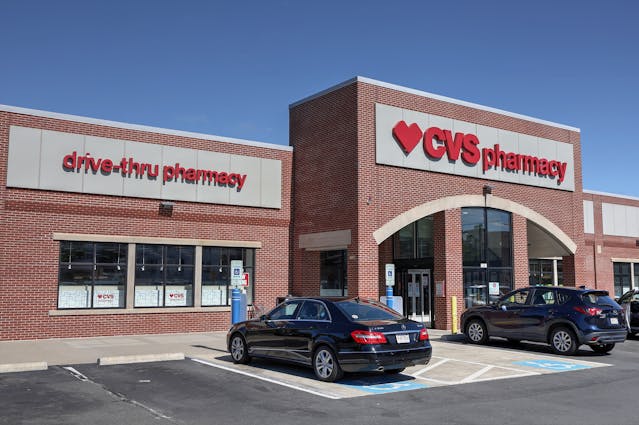In retail, image is everything, and the way that you do things is often going to be important for how it all turns out. If you are keen to make sure that you are getting your business going in the right way, a major part of that is all in the opening of the store. In fact, traditionally opening day for a new retail store has been a big event, and one that you are probably keen to get right if you want to ensure that you are doing it justice – and giving your store the best possible start in life.

So how should you approach opening day, and what are some of the main things to bear in mind? Let’s take a look at some of the major areas of concern that you should focus on. As long as you have thought about all the following, you should find that you are going to open your retail store in style, and give it a powerful start all in all.
Making Sure You’re Ready
One of the first things you will need to do is to make sure that you are actually ready to open your store. In other words, is your business genuinely set up and ready to roll? If it isn’t, then this might be a problem, and it’s something you’ll need to figure out before you can hope to get your opening day set up properly. It’s amazing what a difference it can make, but more to the point you just absolutely need to have some kind of way to ensure that you are actually ready to service customers and be a business – otherwise there is little point in opening up.
So make sure that your business is set up and ready to go. You want to be in a place where you are able to have your opening day and start serving customers straight away. This is the ideal place to start from for any retail business whatsoever.

Have Faith In Your Idea
It’s really important to make sure that you have faith in your business idea, your plan and so on. As long as you have that, it’s going to mean that you are so much more likely to actually be able to see it succeed, and this is the kind of thing that is always going to be really important to think about. Having a lot of faith in your idea can be hard at first, but over time you are going to find that it really does come naturally, once you start to see the customers come rolling in and you see that it really works. However, in the time being, and in preparation for the retail opening, you’re going to have to take a leap of faith to ensure that you can get the ball rolling.
So with that in mind, you should consider some of the things you might be able to do to ensure that you are able to have as much faith in the idea as possible. As long as you do that, it should mean that you are a lot more likely to enjoy the opening day and for it to get started in the right way.
Picking A Date
You’ll obviously need to choose a date for the opening of your store, and this might be a more important decision than you think. You of course need to choose something that is going to work with the timeline of the business – as we said above, you need to make sure you are ready above all. But you also need to consider some of the ways in which you can be affected by different times and dates, and this is something that you will certainly have to think about as well. So picking a date can be a challenging part of the whole process that you will want to bear in mind for sure.

Ideally you will pick this date as early as possible, because you really need to let people know early on when it is going to be. This is in itself a really vital kind of marketing that you need to make use of, and it’s something that you are going to want to think about if you are keen on trying to make your opening as strong and effective as possible.
So pick a date early on and then start to spread the word. That in itself can obviously be a significant challenge to overcome.
Spreading The Word
When you are trying to spread the word about the opening day, you need to make sure that you are doing all you can to keep as many people interested as possible. The great thing about this is you don’t really need to do a great deal except for telling people, as this is enough to get people excited – and again, the earlier you start doing this, the more of an impact it is going to have. But you do need to make sure that you are telling as many people as possible, which is something that is going to be really important in general.
So think of all the main ways that you might be able to do this. This is a very local kind of marketing that is going to benefit your business way beyond the opening day itself, so that is something that you are probably going to want to think about here too. You might use newspaper ads, radio ads, billboards and so on, as these are likely to be very effective all in all. And there is also much to be said for simply telling people by word of mouth and ensuring that as many people as possible hear about it.

Over time, news should spread, and you should find there is a real sense of excitement in the community about your store opening. That’s exactly what you want, and it will help to make opening day as special as possible.
Cleaning The Place
On the opening day itself, you need to make the best impression you can, so thoroughly cleaning the whole place is going to be a really important thing to consider. This is something that you are definitely going to be aware of if you want to ensure that you are getting this right, and it’s important to make sure that you are thinking about some of the ways in which you can do this as easily as possible.

After setting up the store, you are probably going to have some mess around, so tidying up is a good first thing to do here. After that, a deep clean is definitely in order, and you may want to focus specifically on the entrance and welcoming areas. The best first impression you can give of your business here, the better, so make sure that this is as clean and inviting as possible. If you can do that, you should find that you are going to have a much better start to your retail store all in all, which is something that you are going to find hugely important in all this.
So cleaning is a really vital thing to consider, and it’s something you shouldn’t overlook if you can help it.
Outdoor Decorations
You may want to put up a few decorations outdoors to celebrate the opening day, and to draw attention to the store itself. These can be hugely effective marketing in themselves, but they also help to create a sense of fanfare which is exactly what you want on the big day. So you can use banners, teardrop flags, and other such items to help create this effect, and you are going to find it’s a great way to give the effect you are hoping for. You should also be careful not to overdo it, as that can end up having the opposite effect. But if you find the right balance, you should find that this is going to help a great deal and that the opening day is much more of a success.
So with the right outdoor decorations, you should have a much better opening day already. But what are some of the other things you might want to think about here?
Consider Your Competitors
If you want to be cut-throat about it, you can also bear in mind your competitors, and try to open your store at a time that is going to be important for your competitors. That way, you can hope to create the biggest possible effect which is going to affect them, and this is something that you are certainly going to need to consider if you want to be a force in the local community. This is up to you, but it’s one way that you can approach things if you want to.
If you can do those things, you should find that you are going to have a great opening day for your retail store.










